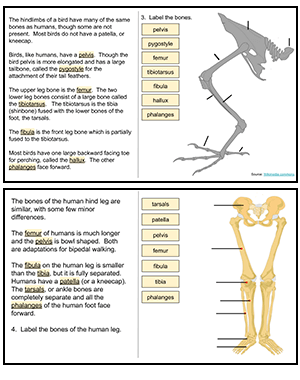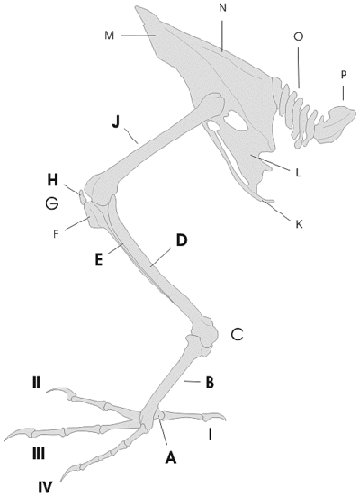
I created this activity as a substitute for the dissection of a bird wing where students compare the bones of a bird to those of a human. In addition, students also complete a coloring activity where they learn the names of each bone. The skeleton coloring activity also includes specific details about homologous structures to tie to the unit on evolution. I designed something similar that didn’t require hands-on materials or colored pencils form home-learners during the pandemic.
In this activity, students progress through slides where the bones are described. Each slide has a task, such as dragging labels to an image or answering questions. I go over the lecture slides on birds and then assign the guided learning on the skeleton system for students to do on their own. At this point in the year, students are familiar with this format on lessons.
Unlike the bird skeleton coloring, I mainly focused on the bones of the hindlimb. Students will learn that the bones have the same basic arrangement: femur, tibia, and fibula, though in birds, the tibia is called the tibiotarsus. They will also locate bones that are unique to the bird, like the furculum and pygostyle. In-person students can also view bird models that I have on display in the classroom. For fun, I have a few Halloween skeleton props, this this one of a raven, for students to look at an find any inaccuracies. These toys are usually on sale after the holiday. I also teach anatomy to upperclassman, so I have plenty of human skeletons in my classroom.

Students will not find this activity difficult. With careful reading of the slide descriptions, most students will have no trouble identifying the bones of the bird’s leg. Even if they do get stuck, there are plenty of images online that show a bird skeleton. I used images from Wikimedia commons and removed the labels.

